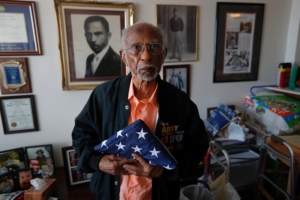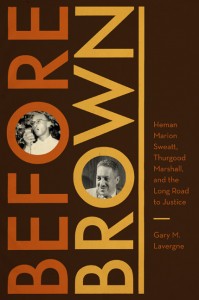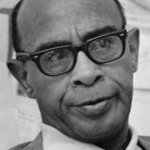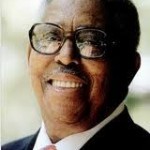The Statue of Liberty was created to celebrate freed slaves, not immigrants, its new museum recounts
Lady Liberty was inspired by the end of the Civil War and emancipation. The connection to immigration came later.
Photo: A close-up of part of the chains at the Statue of Liberty’s feet. (National Park Service)
(The Washington Post) The new Statue of Liberty Museum in New York Harbor boasts a number of treasures: the original torch, which was replaced in the 1980s; an unoxidized (read: not green) copper replica of Lady Liberty’s face; and recordings of immigrants describing the sight of the 305-foot monument.
It also revives an aspect of the statue’s long-forgotten history: Lady Liberty was originally designed to celebrate the end of slavery, not the arrival of immigrants. Ellis Island, the inspection station through which millions of immigrants passed, didn’t open until six years after the statue was unveiled in 1886. The plaque with the famous Emma Lazarus poem — “Give me your tired, your poor, Your huddled masses yearning to breathe free” — wasn’t added until 1903.
“One of the first meanings [of the statue] had to do with abolition, but it’s a meaning that didn’t stick,” Edward Berenson, a history professor at New York University and author of the book “The Statue of Liberty: A Transatlantic Story,” said in an interview with The Washington Post. (more)
Fighting Germans and Jim Crow: The role of black troops on D-Day

World War II veteran Johnnie Jones, Sr. poses for a portrait at his home in Baton Rouge, La., Tuesday, May 28, 2019. Jones, who joined the military in 1943 out of Southern University in Baton Rouge, was a warrant officer in a unit responsible for unloading equipment and supplies onto Normandy. (GERALD HERBERT/AP)
(Stars and Stripes) It was the most massive amphibious invasion the world has ever seen, with tens of thousands of Allied troops spread out across the air and sea aiming to get a toehold in Normandy for the final assault on Nazi Germany. And while portrayals of D-Day often depict an all-white host of invaders, in fact it also included many African Americans.
Roughly 2,000 African American troops are believed to have hit the shores of Normandy in various capacities on June 6, 1944. Serving in a U.S. military still-segregated by race, they encountered discrimination both in the service and when they came home.
But on Normandy, they faced the same danger as everyone else.
The only African American combat unit that day was the 320th Barrage Balloon Battalion, whose job was to set up explosive-rigged balloons to deter German planes. (more)
2019 Aya Symposium at PVAMU
“Education: THE Foundation for Civil Rights in Texas Freedom Colonies”
 The Aya Symposium, in association with the Texas Purple Hull Pea Festival, will be held on Wednesday, June 19 (“Juneteenth”), 2019 at Prairie View A&M University in the School of Architecture. Texas educators, historians, and history enthusiasts are encouraged to attend. K-12 Texas educators will receive 7 CPE credits.
The Aya Symposium, in association with the Texas Purple Hull Pea Festival, will be held on Wednesday, June 19 (“Juneteenth”), 2019 at Prairie View A&M University in the School of Architecture. Texas educators, historians, and history enthusiasts are encouraged to attend. K-12 Texas educators will receive 7 CPE credits.
The one-day symposium will begin at 9 a.m. and include workshops, panels, and guest speakers. Keynote speaker for the event will be Dr. Peniel E. Joseph, Founding Director, Center for Race & Democracy, University of Texas at Austin. Other noted speakers will be Dr. Melanye Price, who will head PVAMU’s new African American Studies program, and Dr. Andrea Roberts, Assoc. Dir., Center for Housing & Urban Development at Texas A&M University and founder of the Texas Freedom Colonies Project.
On June 19, 1865, more than two years after the Emancipation Proclamation, Texas’ enslaved residents were informed of their freedom. Almost immediately, these newly emancipated Texans began to assert themselves as resourceful, innovative citizens, forming more than 540 “Freedom Colonies” throughout the state during the mid-19th through the early 20th centuries as foundations in the fight for Civil Rights for Texans of African descent.
The goal of this symposium, entitled “Education – THE Foundation for Civil Rights in Texas Freedom Colonies” will be to explore the history of the educational systems and structures in Freedom Colonies, their influence on fostering and sustaining Black civil rights in the late 19th and early 20th centuries, and their impact on African-American Texans today.
For registration and more information, visit the Aya web site, www.ayasymposium.org/.
Wreckage of the Last U.S. Slave Ship Is Finally Identified in Alabama
It was torched and then sunk to the bottom of a river, but historians say they have now identified the remains of the last ship to carry slaves to the U.S.
(History) After much searching, researchers have finally located the last U.S. slave ship, the Clotilda, at the bottom of the Mobile River in Alabama. The announcement comes one year after the publication of Zora Neale Hurston’s lost interview with a survivor of that ship, and just a month after a scholar discovered the last Clotilda survivor lived until 1937. It holds special significance for the residents of Africatown, Alabama, many of whom are descended from the Africans illegally trafficked on the Clotilda in 1860.
“It’s a wonderful discovery,” says Sylviane A. Diouf, a visiting scholar at Brown University’s Center for the Study of Slavery and Justice and author of Dreams of Africa in Alabama: The Slave Ship Clotilda and the Story of the Last Africans Brought to America. “This is the only one so far that has been found which came directly from Africa to the Americas with people on board.” (The recently-discovered São José was on its way to Brazil but crashed in South Africa near Cape Town.) (more)
TIPHC Bookshelf
 Published scholarship on black history in Texas is growing and we’d like to share with you some suggested readings, both current and past, from some of the preeminent history scholars in Texas and beyond. We invite you to take a look at our bookshelf page – including a featured selection – and check back as the list grows. A different selection will be featured each week. We welcome suggestions and reviews. This week, we offer, “Before Brown: Heman Marion Sweatt, Thurgood Marshall, and the Long Road to Justice,” by Gary M. Lavergne.
Published scholarship on black history in Texas is growing and we’d like to share with you some suggested readings, both current and past, from some of the preeminent history scholars in Texas and beyond. We invite you to take a look at our bookshelf page – including a featured selection – and check back as the list grows. A different selection will be featured each week. We welcome suggestions and reviews. This week, we offer, “Before Brown: Heman Marion Sweatt, Thurgood Marshall, and the Long Road to Justice,” by Gary M. Lavergne.
On February 26, 1946, an African American from Houston applied for admission to the University of Texas School of Law. Although he met all of the school’s academic qualifications, Heman Marion Sweatt was denied admission because he was black. He challenged the university’s decision in court, and the resulting case, Sweatt v. Painter, went to the U.S. Supreme Court, which ruled in Sweatt’s favor. The Sweatt case paved the way for the landmark Brown v. Board of Education of Topeka rulings that finally opened the doors to higher education for all African Americans and desegregated public education in the United States.
In this engrossing, well-researched book, Gary M. Lavergne tells the fascinating story of Heman Sweatt’s struggle for justice and how it became a milestone for the civil rights movement. He reveals that Sweatt was a central player in a master plan conceived by the National Association for the Advancement of Colored People (NAACP) for ending racial segregation in the United States. Lavergne masterfully describes how the NAACP used the Sweatt case to practically invalidate the “separate but equal” doctrine that had undergirded segregated education for decades. He also shows how the Sweatt case advanced the career of Thurgood Marshall, whose advocacy of Sweatt taught him valuable lessons that he used to win the Brown v. Board of Education case in 1954 and ultimately led to his becoming the first black Associate Justice of the Supreme Court.
This Week in Texas Black History
Jun 4
 In 1991, on this day, Baltimore Orioles manager Frank Robinson is named assistant general manager of the club, only the third African American to become an assistant GM. As a player with the Orioles, Robinson, a Beaumont native, won the triple crown (leading the league in home runs (49), runs batted in (122), and batting average (.316) in 1966. Robinson began managing the Cleveland Indians in 1975 as the first African American to manage a major league team. He was elected to the Baseball Hall of Fame in 1982.
In 1991, on this day, Baltimore Orioles manager Frank Robinson is named assistant general manager of the club, only the third African American to become an assistant GM. As a player with the Orioles, Robinson, a Beaumont native, won the triple crown (leading the league in home runs (49), runs batted in (122), and batting average (.316) in 1966. Robinson began managing the Cleveland Indians in 1975 as the first African American to manage a major league team. He was elected to the Baseball Hall of Fame in 1982.
Jun 5
 On this day in 1950, The U.S. Supreme Court ordered Heman Sweatt admitted to the University of Texas Law School. In handing down its decision in Sweatt v. Painter, the Court concluded that black law students were not offered substantial quality in educational opportunities and that Sweatt could therefore not receive an equal education in a separate law school. Sweatt had teamed with the NAACP to challenge the admissions policy at the UT Law School. The NAACP was looking to test separate but equal education statutes in Texas and the result of Sweatt’s legal battle struck down segregationist policies at the school (for graduate and professional programs only), gained him admission, and paved the way for the landmark decision of Brown v. Board of Education in 1954, which opened integration for undergraduates.
On this day in 1950, The U.S. Supreme Court ordered Heman Sweatt admitted to the University of Texas Law School. In handing down its decision in Sweatt v. Painter, the Court concluded that black law students were not offered substantial quality in educational opportunities and that Sweatt could therefore not receive an equal education in a separate law school. Sweatt had teamed with the NAACP to challenge the admissions policy at the UT Law School. The NAACP was looking to test separate but equal education statutes in Texas and the result of Sweatt’s legal battle struck down segregationist policies at the school (for graduate and professional programs only), gained him admission, and paved the way for the landmark decision of Brown v. Board of Education in 1954, which opened integration for undergraduates.
Jun 6
On this day in 1944, Olympic sprint champion Tommie Smith was born in Clarksville. The seventh of 12 children, he survived a life-threatening bout of pneumonia as an infant. Smith is the only man in the history of track and field to hold 11 world records simultaneously. At San Jose State University, he tied or broke 13 world records. However, he is most remembered as one half of the duo of black U.S. Olympians – along with John Carlos – who, during the 1968 Summer Games in Mexico City, stood on the victory stand with heads bowed and raised clinched fists in a demonstration for human rights, liberation and solidarity. The protest overshadowed Smith’s performance on the track where he broke the world and Olympic records, winning a gold medal in the 200-meter sprint with a time of 19.83 seconds. The story of the “silent gesture” is captured in the 1999 HBO-TV documentary, “Fists of Freedom.” In 1978, Smith was inducted into the National Track & Field Hall of Fame, and has accumulated many other honors.
Jun 7
On this day in 1950, John Chase enrolled in the University of Texas School of Architecture graduate program, becoming the first African-American to enroll at a major university in the South. Chase, a native of Annapolis, Md., earned a Master of Architecture degree in 1952 and became the first black graduate of the University. That same year, he also became the first licensed African-American architect in Texas and was the only black architect licensed in the state for almost a decade. In 1980, he became the first African-American appointed to the U.S Commission of Fine Arts. His firm’s designs include: the George R. Brown Convention Center in Houston, the Harris County Astrodome Renovation, and the Thurgood Marshall School of Law at Texas Southern University.
Blog: Ron Goodwin, Ph.D., author, PVAMU history professor
Ron Goodwin is an assistant professor of history at Prairie View A&M University. Even though he was a military “brat,” he still considers San Antonio home. Like his father and brother, Ron joined the U.S. Air Force and while enlisted received his undergraduate degree from Texas Lutheran University in Seguin, Texas. After his honorable discharge, he completed graduate degrees from Texas Southern University. Goodwin’s book, Blacks in Houston, is a pictorial history of Houston’s black community. His most recent book, Remembering the Days of Sorrow, examines the institution of slavery in Texas from the perspective of the New Deal’s Slave Narratives.
Recent Posts
The Everlasting Light
Ye are the light of the world. A city that is set on an hill cannot be hid. Neither do men light a candle, and put it under a bushel, but on a candlestick; and it givith light unto all that are in the house. Let your light so shine before men, that they may see your good works, and glorify your Father which is in heaven. — Matthew 5: 14-16
This is the month set aside to honor…(more)
The Return of the Silent Majority
Fifty years ago, in January 1969, Richard Nixon was sworn in as the thirty-seventh president of the United States. His legacy as President was marred by the Watergate investigations and his eventual resignation from office which overshadowed the way in which he won the office. His central campaign rhetoric was designed to garner support from white Southerners (otherwise known in history as the “Silent Majority”) whose racial beliefs leaned heavily towards the support of white…(more)
Submissions wanted
Historians, scholars, students, lend us your…writings. Help us produce the most comprehensive documentation ever undertaken for the African American experience in Texas. We encourage you to contribute items about people, places, events, issues, politics/legislation, sports, entertainment, religion, etc., as general entries or essays. Our documentation is wide-ranging and diverse, and you may research and write about the subject of your interest or, to start, please consult our list of suggested biographical entries and see submission guidelines. However, all topics must be approved by TIPHC editors before beginning your research/writing.
We welcome your questions or comments. Please contact Michael Hurd, Director of TIPHC, at mdhurd@pvamu.edu.



